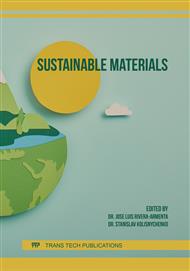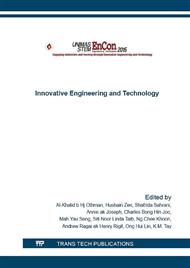p.3
p.11
p.19
p.27
p.33
p.41
p.49
p.59
Experimental Strength of Woven Fabric Kenaf Composite Plates with Different Stacking Sequences
Abstract:
Awareness on implementing sustainable construction materials has risen significantly leading to increased renewable materials used commercially. Kenaf fibers are potentially used as composite reinforcements and combined with epoxy polymer to produce an advanced engineering material that may offer superior specific stiffness (and strength) to its density. Other advantages include renewability, easy during fabrication handling stage and relatively cheaper than commercial fibers counterparts. Current project aims to investigate mechanical strength of woven fabric kenaf composites coupons with different stacking orientations. Testing series under investigation includes different lay-up types with variation of plate thickness. Mechanical testing is conducted referred to relevant code of practice and associated damage observations during testing will be recorded. It is suggested that these materials are potential to provide an alternative reinforcing materials in composite fabrications and enhanced its applicability to a greater extent in local sector.
Info:
Periodical:
Pages:
27-32
Citation:
Online since:
April 2016
Authors:
Keywords:
Price:
Сopyright:
© 2016 Trans Tech Publications Ltd. All Rights Reserved
Share:
Citation:



